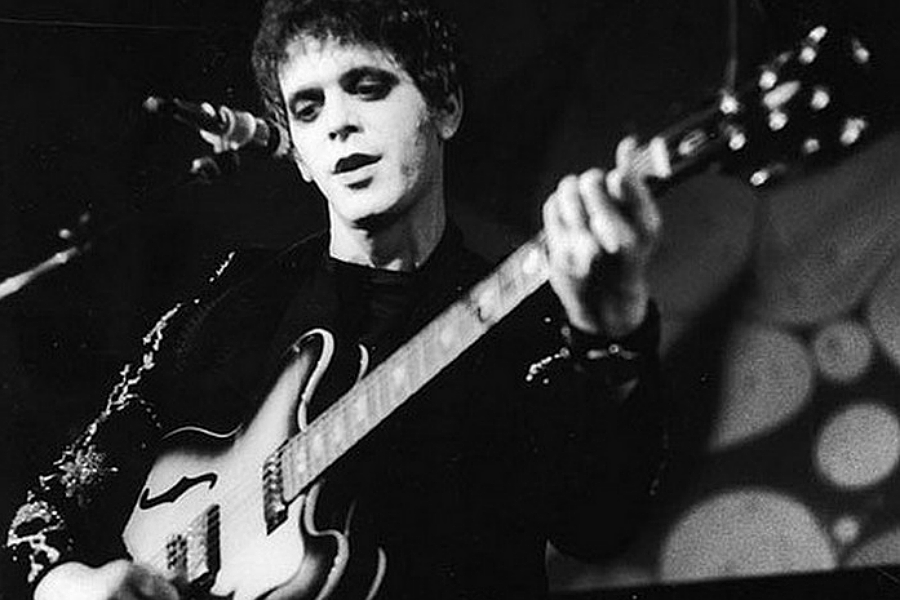Glam! Rock

With Tate Liverpool’s Glam! exhibition having just opened, Amy Jones takes a look at the songs that helped define a scene…
Friday saw Tate Liverpool’s new exhibition Glam! The Performance of Style open to the public. The exhibition features work from artists such as David Hockney, Cindy Sherman, Richard Hamilton and Gilbert & George among many others. To celebrate this flamboyant show we’ve put together a playlist of the most iconic sounds of Glam rock.
Emerging out of the English psychedelic and art rock movements of the late sixties, Glam rock was a diverse sub-genre of rock, peaking in the mid 1970’s. Fashion and the visual were essential aspects of Glam rock and influences as varied as 1930’s Hollywood glamour, science fiction and mysticism can all be attributed with creating the Glam rock look (along with a shed load of sequins and glitter, of course).
While it may appear on the surface to be a world of glitter, platforms and spandex, Glam’s unique mix of art, fashion and music was highly effective in delivering fine art ideas into popular culture, and often directly confronting subjects such as shifting roles in relation to gender and identity, as well as mainstream notions of beauty.
Popular musicians were central to the migration of these ideas into the mainstream. Two of the earliest artists to be associated with the movement were Marc Bolan and David Bowie. Bolan’s performance of ‘Hot Love’ on Top of the Pops in 1971, wearing sequins is seen by some as the birth of Glam rock, and therefore holds the number one spot on our playlist. A matter of months after Bolan’s iconic performance, the world was introduced to Bowie’s glittering alter ego Ziggy Stardust. With Ziggy, Bowie began incorporating vibrant make-up, mime and performance into his act. We’ve given you a double dose of Bowie in our playlist because, well, we just couldn’t help it.
Bowie’s music features directly in Glam! at Tate Liverpool in a spectacular glitter-strewn installation by Marc Camille Chaimowicz. Among the acts that followed Bowie down the glittering road to Glam were Roxy Music, Mott the Hoople and Alvin Stardust. Many of these acts, in particular Alvin Stardust, typified the bubblegum pop of the era with lighthearted anthems alluding to a world of carefree high glamour.
When Glam rock (‘Glitter Rock’ in the US) travelled across the pond on the sequined wings of Bowie, one of the few British Glam rock acts to be welcomed open armed by the American Market, it influenced several American acts. Among these were Lou Reed, Jobriath, Iggy Pop and New York Dolls. This group of musicians adopted, in varying degrees, the visual chaos of the aesthetic. However, much darker lyrical content became a characteristic of these acts, contrasting with the diverting upbeat anthems of their British counterparts.
Songs tackled the realities of living life on the fringes of society, showing glamorous but tragic figures, often embroiled in a life of substance abuse and prostitution. These themes are evident particularly in Lou Reed’s ‘Wild Thing’ and Iggy Pop’s ‘Dum Dum Boys’, co-written with David Bowie. This darker side of Glam is typified by Jobriath, widely acclaimed as the first openly gay pop star, and tragically one of the first well known musical figures to die from AIDS. His track ‘I’m a Man’, featured on our playlist, confronts gender norms head on.
A central theme of the Glam! exhibition is the questioning of gender identity. Artists Nice Style: The world’s first Pose Band, created work inspired by the dandyism of the era, taking inspiration from poses by bands such T-Rex and the Bay City Rollers. The pieces created from this posing examine the role of body image and self-fashioning essential to the creation of the Glam rock appearance. In many ways, the performative glamour of the era gave way to new freedoms in identity, highlighting the superficiality of gender construction, as well as the fluidity of gender and sexuality itself.
By taking idealised states of glamour to their extremes, and flouting their meaning, Glam musicians had an impact on undermining the very systems that kept them in place. While underground groups like San Francisco’s The Cockettes had been using their psychedelic bearded drag queen cabaret to critique gender constructions since the late sixties, the adoption of this approach by pop stars like Bowie and Jobriath further contributed to opening up a mainstream dialogue about gender identity.
Also included in our playlist are a handful of proto-punk acts highlighting Glam rock’s influence on other cultural movements such as Punk and Glam metal. Milk ‘N’ Cookies were a Glam rock band from Long Island, New York, and although they did not receive widespread recognition during their creative peak, they have retrospectively gained cult status for their influence in the area where Glam and Punk began to overlap. New York Dolls are another group which became central to the emergence of Punk culture in the late seventies, one which marked the start of a much larger rejection of mainstream ideals.
The period of European and North American cultural history associated with Glam marks the beginnings not only of a questioning of mainstream ideals, but one which just happened to have and a brilliant sound track, too.
Amy Jones





